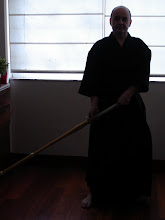Although the Katana, or “long sword”, is widely recognized as the archetypal Samurai weapon, this was not the only tool in their vast arsenal. Their weapons ranged from the usual swords and knives, to bows, staffs, chain weapons and even seemingly harmless items such as fans and hairpins.
Samurai Weapons:
Katana (Long Sword): The definitive samurai weapon. The katana was central to the samurai’s arsenal and was treated with the utmost respect; some samurai went so far as to name their sword and treat it as if it were a living being.
Wakizashi (Side Sword): The secondary sword used by a samurai.
Tanto (Short Sword/Dagger): The smallest sword carried by the samurai, meant for close quarters combat. Also used in seppuku, the ritual suicide used to regain honor through death.
Tanto (Short Sword/Dagger): The smallest sword carried by the samurai, meant for close quarters combat. Also used in seppuku, the ritual suicide used to regain honor through death.
Yumi (Long Bow): A long bow used by the samurai, often on horseback.
Kama (Sickle): Originally intended for use as a farming tool, the samurai also employed the kama as a deadly weapon.
Bo, Hanbo, and Tanbo (Staff Weapons): The Bo is the longest staff used by the samurai, with the Hanbo being about half the length of a full-sized Bo. The Tanbo were shorter still and meant to be used as a pair.
Tessen (Iron Fan): The Tessen is a metal fan with razor sharp edges carried by the samurai wherever his other weapons were not allowed; in essence one of the first concealed weapons employed by the samurai class.
Kansashi (Pointed Hairpin): The Kansashi were hairpins mostly used by the women of the samurai class. They were easily concealed in a woman’s long hair but could be removed and the pointed ends used as a weapon in case of emergency.
Samurai Armor: Yoroi (Japanese Suit of Armor): The Yoroi was the Japanese suit of armor employed by the samurai to protect them in battle. Unlike the one or two piece suits used by knights in medieval Europe, the Yoroi consisted of many moving parts, allowing a wider range of movement with relative ease.
Taken from http://japaneseweapons.org/samurai/weapons-and-armor/ a post by Haddiqa Ismail - January 22, 2016
Taken from http://japaneseweapons.org/samurai/weapons-and-armor/ a post by Haddiqa Ismail - January 22, 2016




No hay comentarios:
Publicar un comentario